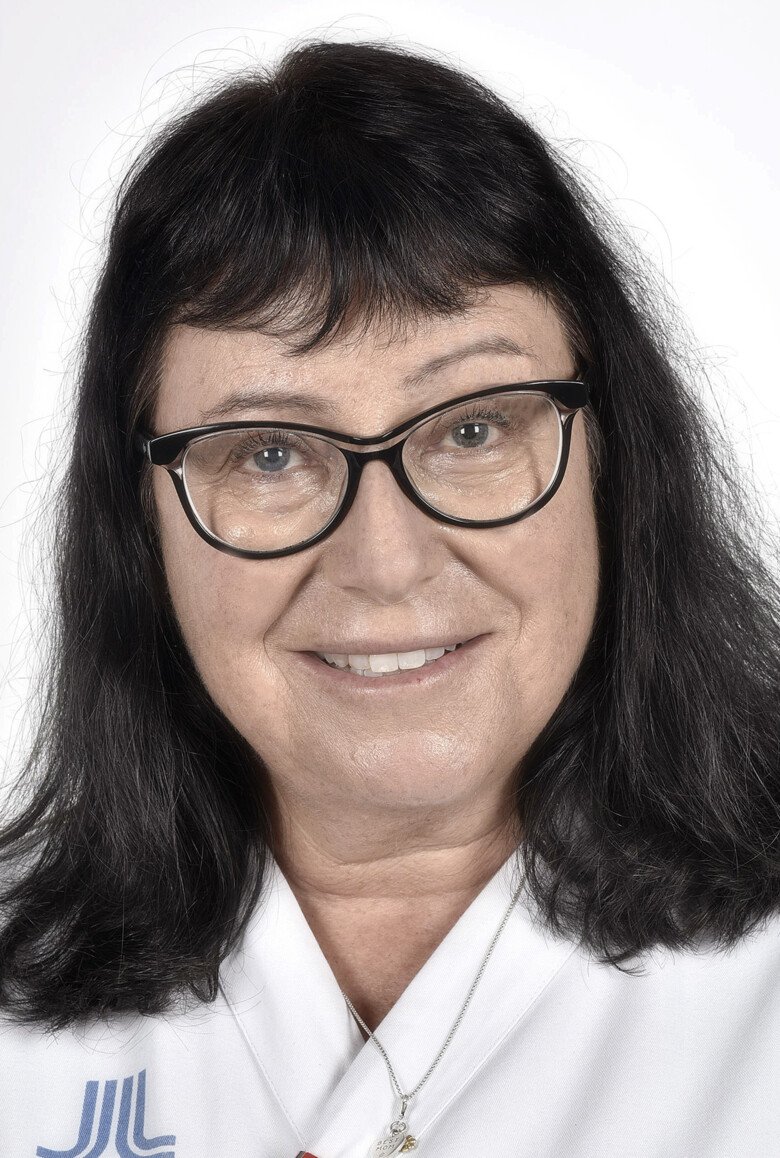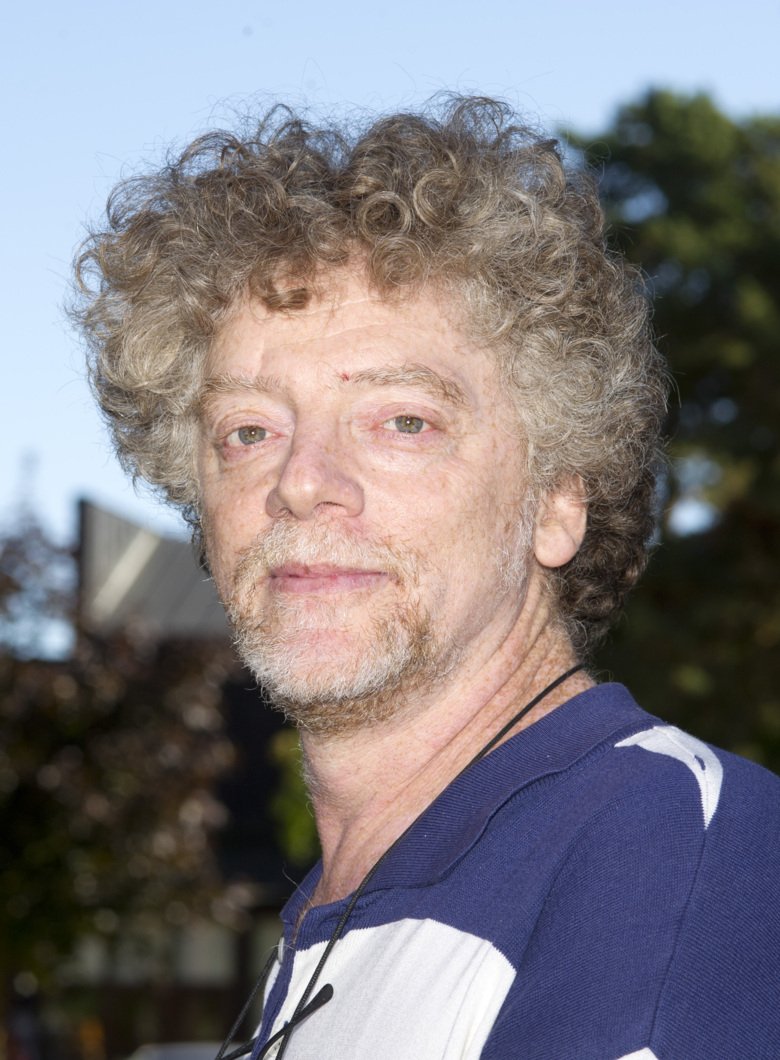The world’s infectious disease No 1
In Sweden, tuberculosis is a small problem, but globally it is one of the biggest health threats. WHO and UN wants to eradicate the disease by 2030. At Karolinska Institutet, researchers unite under the umbrella of a new centre to contribute

Text: Fredrik Hedlund, first published in Swedish in the magazine Medicinsk Vetenskap No 3/2018.
In the last decade, the tuberculosis bacterium Mycobacterium tuberculosis has become the infectious agent, or pathogen, that kills the most people in the world. About 1.7 million people died of tuberculosis in 2016. That is close to 5,000 people a day. By comparison, the Ebola outbreak in West Africa between 2013 and 2016, which attracted a lot of attention, had a total death toll of about 11,000 people. Tuberculosis claims the same number of lives in a weekend.
The main reason for tuberculosis now being global society’s enemy number one in terms of infectious diseases is that treatment of another infectious disease – HIV/AIDS – has become that much better. In other words, HIV is no longer the number one killer. In 2016, about a million people died of AIDS-related diseases according to the UN programme UNAIDS, a halving since 2005 when roughly 1.9 million people were estimated to have died.
“It is an unpleasant first place that tuberculosis now holds,” says Knut Lönnroth, Professor of Social Medicine at the Department of Global Public Health at Karolinska Institutet and director of the new Centre for Tuberculosis Research, which was inaugurated in March 2018.
Eliminate the disease
At the same time, first place means that the will to eliminate the disease is still strong. In 2014, the WHO introduced its strategy to eradicate tuberculosis, and the goal is to reduce the number of new cases by 80 per cent and the number of deaths caused by the disease by 90 per cent by 2030. The goal to end the epidemic has also been included in UN Agenda 2030. Despite tuberculosis holding this unpleasant first place, development is progressing in the right direction, albeit slowly.
The number of new cases, or the incidence, is decreasing by 1.5 to 2 per cent a year. That is, however, far from what is needed to achieve the goal set out in the agenda. In the initial phase, a decrease of 4 to 5 per cent a year is needed.

“Yes, and it has to happen this year, after which the rate has to increase to 10 per cent a year by 2025 and then by 15 per cent after that. And that is not possible with the diagnosis, treatment and preventive tools we are using today,” he says.
In other words, at least one major breakthrough in research is needed, which is something that the international organisations simply assumed would happen when they established the objectives.
“It is now a matter of optimally using what we have at our disposal. They have given it ten years, from when the goals were formulated, for something to be developed that will revolutionise how we prevent and treat the disease,” says Knut Lönnroth.
Attacks the lungs
Tuberculosis, or TB, is an infectious disease caused by bacteria from the mycobacterium family, mainly Mycobacterium tuberculosis. The most common form of the disease attacks the lungs, but it can also take other forms and affect the lymphatic system, spine, brain or other bodily organs. Pulmonary tuberculosis is highly contagious as it is transmitted when infected people cough or sneeze, releasing tiny aerosol droplets with bacteria into the air.
A person can become infected simply by inhaling a few of these droplets, but in most cases, more prolonged and close contact is required. In nine out of ten people with TB, the immune system is able to either neutralise or encapsulate the bacteria in so called granuloma, which means they do not show any symptoms of disease.
It is unknown why some are affected by active TB, while the majority of people are able to encapsulate the bacteria, but for those with an impaired immune system, such as people who are malnourished, infected with HIV or being treated with pharmaceuticals that supress the function of the immune system, the risk of attracting the active form is particularly high. In other words, a majority of those who become infected are unaware of it. According to WHO estimates, at least every fourth person in the world is infected with tuberculosis bacteria, but the bacteria are kept in check in a so called state of latency.
For individuals with latent TB, the risk of the disease becoming active is small, about 10 percent become affected during their lifetime. Most start showing symptoms two to five years after being infected, but there are people who carry latent bacteria throughout most of their lives only to develop active TB in old age, when the immune system is naturally lower.
No longer the case
30 years ago, the largest group of TB patients in Sweden consisted of older people who had their latent TB reactivated either by age or via pharmaceutical treatments that supressed the immune system. But this is no longer the case.

“Since the late 1980s, the largest group of people with TB in Sweden has changed from older people, who has their latent TB reactivated, to young migrants. 90 per cent of cases in Sweden is now made up of people who come from other countries,” says Judith Bruchfeld, Senior Physician and Head of the Division of Infectious Diseases at Karolinska University Hospital and Senior Lecturer at the Department of Medicine, Solna, Karolinska Institutet.
She is also the chair of the new Centre for Tuberculosis Research and a member of the WHO Steering Group for treatment of latent TB. As specialist in infectious diseases, she meets patients receiving treatment every day. And here, the treatments work very well.
“When we treat patients with active TB we use at least four different pharmaceuticals at once to prevent the spreading of resistant bacterial strains while we wait for resistance confirmation from the lab. We now have access to rapid tests that give results within a week on whether or not there is resistance to the two most important pharmaceuticals, isoniazid and rifampicin,” she explains.
If the bacteria are responding to the treatment, one pharmaceutical can be removed right away, another after two months, and the patients are then treated with the antibiotics isoniazid och rifampicin for a total of six months.
A growing problem, however, is that the bacteria is resistant to the standard treatment, and then other pharmaceuticals have to be picked out based on the resistance pattern. The treatment may then go on for as long as two years. Even though such a long treatment can be trying due to the side effects, it works well.
“In Sweden, we have really good outcome rates. We cure about 83 per cent of patients,” says Judith Bruchfeld.
Two new antibiotic treatments
A few years ago, for the first time in 40 years, two new antibiotic treatments for tuberculosis, bedaquiline (Sirturo) and delamanid (Deltyba), were approved. Trials are currently under way to document shorter treatments on resistant bacterial strains, and the WHO already recommends them for certain patients. Latent TB can also be treated. One problem, however, is that it is not possible to predict who will develop active TB among those with latent TB, and they would therefore derive no practical advantage from any treatment.
“If we treat these people as a preventive measure, then we treat people that have yet to fall ill. In that case, you really do not want to have any side effects, at least not any serious ones. You want to treat as few people as possible as fast as possible,” says Judith Bruchfeld.
She explains that there are now three-month treatments that only include twelve antibiotic doses, and that there is a study where a one-month treatment was used with promising results. Yet no matter how short the treatment period becomes, it is not realistic to treat one fourth of the global population, and a test is therefore needed which can identify the right people to treat. This is something that Judith Bruchfeld and her research team is currently working on.
“In order to greatly reduce the incidence of TB by 2030, we also have to tap into this pool of people with latent TB. For that reason, we are trying to find markers of the types of latent TB where there is an increased risk of activation,” she says.
She adds that they are also working on developing better and simpler methods for diagnosing TB.
“Another one of our research fields is to discover better diagnostic methods which can then be used in countries where TB is common. We are developing rapid methods for detecting TB in urine samples. Ideally, it would work just like a pregnancy test, and it is a research collaboration with the Bill Gates Foundation,” she says.
Many low-income countries
In Sweden, tuberculosis is a small cause for concern, but it is a serious threat in many low-income countries in the world. One problem is that the current treatment works better here than over there. For instance, Judith Bruchfeld can show a healing frequency at over 80 per cent for multi-resistant tuberculosis, while the frequency in countries where the disease is a genuine threat is as low as 54 per cent.
“Those are really bad numbers. Some die, and those who live on continue to infect new people,” says Judith Bruchfeld.
In fact, estimates show that a majority of those who become infected with tuberculosis in the world every year, could be cured using current treatments.
“Yes, if you were to exclude the most resistant forms of the bacterium, you would be able to cure almost everyone,” says Knut Lönnroth.
In other words, the greatest problem is not that the medical tools are insufficient, it is that they are not used optimally in all countries. This where the other dimensions of the disease come into play. Knut Lönnroth explains that the medical model cannot sufficiently explain everything when it comes to tuberculosis.
“If we take a more socio-economic approach, the situation quickly becomes a lot more complicated,” he says.
For example, tuberculosis always affect the poor the worst. Their living conditions are worse and they do not eat as well. It is easer for the airborne disease to infect people living in overcrowded conditions, and it affects people who are malnourished more frequently.
“If we look at the entire treatment chain, it is of key importance once you fall ill to quickly receive health care, sound treatment and complete a full course of treatment. For the poorest, there are often several obstacles in the way of proper health care. Having access to and understanding information, as well as putting that information into practice, are other poverty-related obstacles,” explains Knut Lönnroth.
Even though treatment for tuberculosis is free in most countries for those who have fallen ill, they incur additional costs, for example for tests to make a diagnosis or to exclude other diseases, as well as costs in connection with hospital stays and food costs. In addition, relatives often have to help out with service functions for the person with the disease, which may result in neither the person with TB nor the relative being able or allowed to work.
Stigma surrounding tuberculosis
In many countries there is a stigma surrounding tuberculosis that leads to individuals with TB being fired and thus unable to provide for themselves. Knut Lönnroth and his research team have investigated what obstacles stand in the way of optimal and successful treatment, and an important part relates to costs for arriving at a diagnosis and completing a course of treatment.
“In many countries, the majority of the cost is related to loss of income, either losses for the patient alone or the combined losses of the patient and other family members whose help is needed during the treatment process, according to our research. We have developed a new measurement tool which is now being used by the WHO, which states that no family being affected by tuberculous shall run the risk of incurring disastrous financial costs,” he says.
They are also working on how to address the economic and social issues surrounding the disease in many countries.
“It is about finding the best cost-reducing strategies to both remove barriers standing in the way of access to healthcare and completion of treatment, as well as to reduce the poverty effects of the disease, so that individuals and entire families do not end up in a vicious circle of disease and poverty. In Sweden, this is what we would call a functioning social insurance,” he says.
Knut Lönnroth is currently running a number of studies with his research team with different models for social and economic support and compensation for loss of income.
“It is not really about establishing whether this is effective or not, because we already know that it is. “It is about how we design the models, and how we adapt them to each and every country’s specific conditions,” he says.
Appears to be solvable
And the problem actually appears to be solvable. According to WHO statistics, the following seven countries accounted for 64 percent of new TB cases in 2016: India, Indonesia, China, the Philippines, Pakistan, Nigeria and South Africa. These countries are regarded as middle-income countries with growing economies, and they should have the resources needed to at least be able to deal with the issue in their own countries and in that way contribute to the global fight against TB.
Knut Lönnroth points out that from a general point of view these countries are getting richer, but the income distribution in their populations is more uneven than that of 1950s Sweden when the incidence of TB decreased dramatically here.
“Because of the clear link between tuberculosis and poverty, the number of new cases can be used as an indicator of how successful the health and medical care systems and the social policies are in these countries, but they do not like to hear about that,” he explains. “And for that precise reason, it is a good argument for putting pressure on them. Pressure is necessary to speed up the development,” he says.
“The reduction rate of TB cases in these countries today is not as rapid as it was in the 1950s and 60s when the first antibiotic treatments appeared on the market. But there really is no reason for why it should be slower now. The diagnosis and treatment tools of today are better than the ones back then,” he says.
New ideas are required
However, even if today’s tools were used optimally around the world, it would still not be enough to achieve the goal set out in Agenda 2030. For that, new ideas are required. And there are plenty of those available. Gunter Schneider is a Professor of Molecular and Structural Biology at the Department of Medical Biochemistry and Biophysics at Karolinska Institutet. Schneider and his research team are trying to survey the survival mechanisms of the tuberculosis bacterium in order to develop inhibitors for them.

“We want to develop a form of treatment that eliminates the tuberculosis bacterium completely, in its latent state as well. We are focusing on something called redox defence, short for reduction/oxidation defence,” he says.
He explains that infected cells in the body can sense the intruder and use so called radicals to try to eliminate the bacteria, which respond by launching their redox defence. This usually takes place during the latent phase.
“The tuberculosis bacterium has a number of tricks that it uses to defend itself, and we are trying to destroy that defence,” says Gunter Schneider.
He explains that they have developed a few substances that show promise when they test them in vitro, but they need further testing, first in animal experiments and then, if the results are still promising, in clinical trials. At the same time, he is well aware that the chances of these particular substances to proceed into clinical trials are small.
“Out of a thousand substances, a maximum of ten go to clinical trials,” he says.
Any potential clinical trial is also too expensive and complex to carry out within the academic world, so if the substances were to make it through the bottleneck, Schneider would offer them to the non-commercial development organisation TB Alliance, which has cooperation agreements with many pharmaceutical companies that can develop the substances further. That is the reality within the field of tuberculosis.
Much of the preparatory research is carried out at universities, while the pharmaceutical companies wait for the 990 non-viable substances to be sorted out. It is a process that Gunter Schneider does not mind; the most important thing is that the projects that show promise may eventually result in a real treatment.
“The pharmaceutical companies do not stand to make a lot of money within the field of tuberculosis, so they are basically doing this for free and are therefore looking for the most promising candidates,” he says.
Another way to effectively stop the tuberculosis bacterium in its tracks would be to develop a vaccine for protection against the infection. But according to Martin Rottenberg, Professor of Infection Immunology at the Department of Microbiology, Tumour and Cell Biology at Karolinska Institutet, that has turned out to be easier said than done.
BCG vaccine far from perfect
A vaccine does exist in the form of the almost 100-year-old BCG vaccine, but it is far from perfect. It works better when administered to children instead of adults, but the effect varies from 0 to 80 per cent depending on the study. Those who receive the vaccine are not protected against the infection itself. Instead, their risk of developing the active form of the disease is slightly reduced, yet the effect of the vaccine is not permanent and it subsides after some time. In other words, the vaccine is simply insufficient for stopping the epidemic.
The tuberculosis bacterium is intracellular, which means that it hides inside immune cells in the body where it is also surrounded by other immune cells in a so called granuloma, making it very difficult to develop an effective vaccine against it. A regular vaccine that generates antibodies is therefore useless. Instead, a tuberculosis vaccine must generate another type of immune cell, so called T-cells. And that is not easy to do. After several failed attempts, the vaccine scientists have now gone back to the drawing board to start over.

“What has happened is that we have put a stop to the major clinical trials and reverted back to finding out what the mechanisms are and how we can measure them. It has not been particularly clear before,” says Martin Rottenberg.
His own research team is making a strong contribution to the work.
“We are trying to get a better understanding of which mechanisms to induce and which to stay away from to receive a good immune response. We are also trying to understand the architecture of the granuloma, which cells they contain and which important molecules they release,” he says
But he also has a few new ideas underway. In a recent study, which he published with a group of other scientists, a nanoparticle-fusion protein was shown to contribute to a significantly increased effect of the BCG vaccine in animal experiments. The study involves a short-chain nanoparticle with three tuberculosis antigens.
“The main idea was to develop a vaccine that could be given via the mucous membranes instead of via injection. The idea is to administer the vaccine directly into the lung. The fusion protein worked pretty well and reinforced the protective effects of the BCG vaccine,” he says.
Further development of the nanovaccine is now in someone else’s hands and he cannot begin to imagine when a new effective tuberculosis vaccine, nano-based or not, will become available. But it will hardly be anytime soon.
Supplement of vitamin D
It is a good thing then that there are other ideas that can be put into practice immediately. In late April, Susanna Brighenti, Senior lecturer in Immunology at the Department of Medicine, Huddinge at Karolinska Institutet, published a clinical study which included 350 Ethiopians with pulmonary tuberculosis. It shows that a supplement of vitamin D and phenylbutyrate leads to significantly faster recovery during antibiotic treatment.

“Vitamin D affects the immune system in more ways than one, but above all it introduces antimicrobial peptides and something called autophagy, through which tuberculosis bacteria are eliminated in both macrophages and in the mucous membranes of the respiratory tracts. Butyrate, which is usually produced by good gut bacteria, further enhances the effects of the vitamin,” says Susanna Brighenti.
Over half of the Ethiopian patients in the study were underweight and 80 per cent had a vitamin D deficiency, which could explain the vitamin supplement’s effect on the immune system.
“Our results indicate that vitamin D supplementation is most effective if the patients have low vitamin D levels to begin with. The effect is also more prominent in patients with severe symptoms of the disease,” says Susanna Brighenti. Because tuberculosis primarily affects poor and malnourished people, the outcome of the study is of great importance. “Hopefully this sort of immunotherapy can work as supportive treatment to regular antibiotic treatment in order to achieve faster recovery, especially in countries where tuberculosis is common,” says Susanna Brighenti.
Increased antibiotic resistance
In spite of this he overall prospects of fulfilling the WHO and UN goal of an 80 per cent decrease of new TB cases and a 90 per cent decrease of TB deaths by 2030 are not promising. Increased antibiotic resistance, setbacks in vaccine research, and a far too low rate of incidence decrease are factors that speak against fulfilment of the goals. Yet Knut Lönnroth is still cautiously optimistic.
“In order to tackle the situation globally, medical interventions, socio-economic interventions and new research is needed. In theory, it is still possible to achieve the goal if all pieces quickly fall into place, but from a realistic perspective, all it takes is for one thing to go wrong for it to become impossible to solve the situation,” says Knut Lönnroth.
However, he says that the issue is now a top political priority because of the UN meeting for heads of states in New York on 26 September, which will contribute to increased focus and pace of the work.
“For the first time ever, the heads of states from a large number of countries are meeting under the UN flag to discuss tuberculosis. It is an historic opportunity to focus more on the issue and to set aside more resources to achieve the goals,” he says.
It is fair to say that the sand in the hourglass is running out as far as reaching the goal set out in Agenda 2030. That is why the meeting in New York is the tuberculosis researchers’ last hope.
“People are hoping that a very ambitious research agenda will be formulated, and that requires bigger financial investments. But if that does not happen, then we will definitely not reach the goals,” says Knut Lönnroth.
Text: Fredrik Hedlund, first published in Swedish in the magazine Medicinsk Vetenskap No 3/2018.
